KENNEDY SPACE CENTER, FL – On Monday, June 9, Boeing revealed the design of their CST-100 astronaut spaceliner aimed at restoring Americas ability to launch our astronauts to low-Earth orbit (LEO) and the International Space Station (ISS) by 2017.
The full scale CST-100 mockup was unveiled at an invitation only ceremony for Boeing executives and media held inside a newly renovated shuttle era facility at the Kennedy Space Center where the capsule would start being manufactured later this year.
Universe Today was invited to tour the capsule for a first hand inspection of the CST-100’s interior and exterior and presents my photo gallery here.
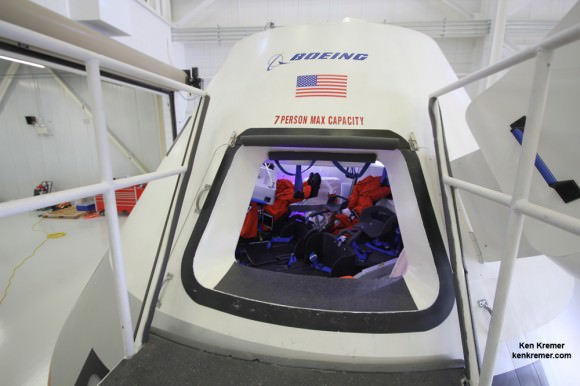
The CST-100 is a privately built manrated capsule being developed with funding from NASA under the auspices of the agency’s Commercial Crew Program (CCP) in a public/private partnership between NASA and private industry.
The vehicle will be assembled inside the refurbished processing hangar known during the shuttle era as Orbiter Processing Facility-3 (OPF-3). Boeing is leasing the site from Space Florida.
Boeing is one of three American aerospace firms vying for a NASA contract to build an American ‘space taxi’ to ferry US astronauts to the space station and back as soon as 2017.
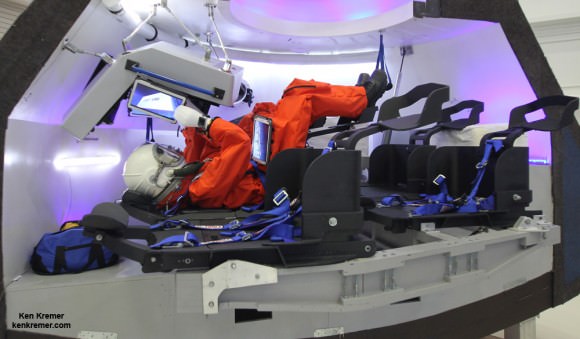
The SpaceX Dragon and Sierra Nevada Dream Chaser are also receiving funds from NASA’s commercial crew program.
NASA will award one or more contracts to build Americas next human rated spaceship in August or September.
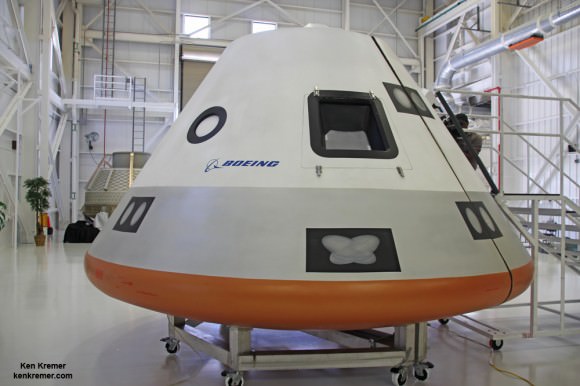
Since the forced shutdown of NASA’s Space Shuttle program following its final flight in 2011, US astronauts have been 100% dependent on the Russians and their cramped but effective Soyuz capsule for rides to the station and back – at a cost exceeding $70 million per seat.
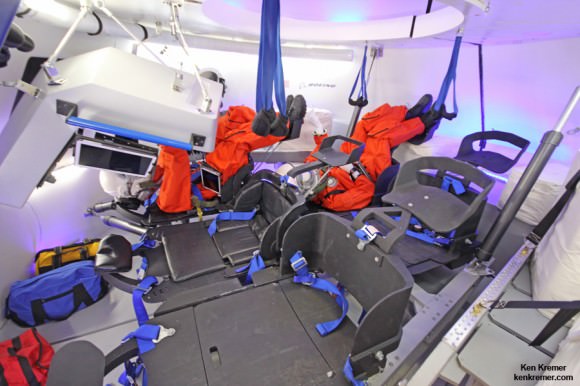
Chris Ferguson, the final shuttle commander for NASA’s last shuttle flight (STS-135) now serves as director of Boeing’s Crew and Mission Operations.
Ferguson and the Boeing team are determined to get Americans back into space from American soil with American rockets.
Read my exclusive, in depth one-on-one interviews with Chris Ferguson – America’s last shuttle commander – about the CST-100; here and here.
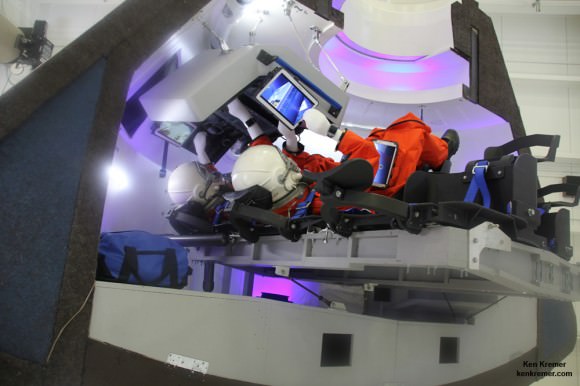
The vehicle includes five recliner seats, a hatch and windows, the pilots control console with several attached Samsung tablets for crew interfaces with wireless internet, a docking port to the ISS and ample space for 220 kilograms of cargo storage of an array of equipment, gear and science experiments depending on NASA’s allotment choices.
The interior features Boeing’s LED Sky Lighting with an adjustable blue hue based on its 787 Dreamliner airplanes to enhance the ambience for the crew.
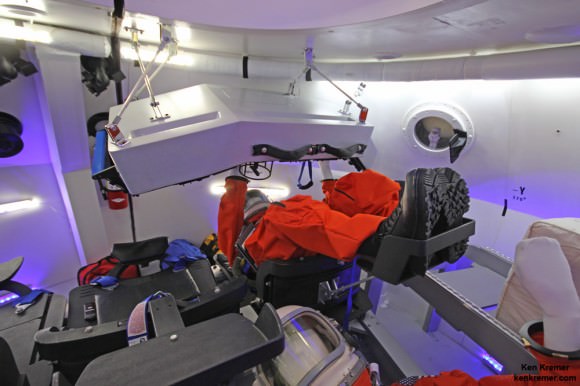
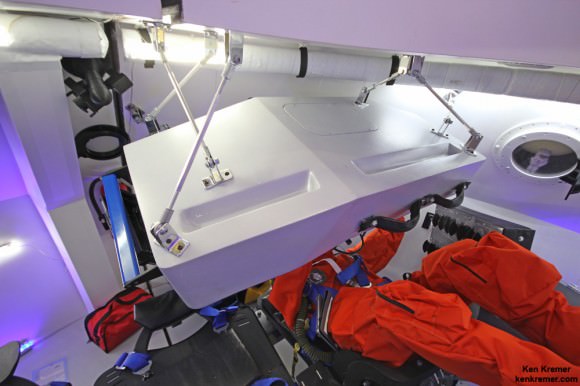
The reusable capsule will launch atop a man rated United Launch Alliance (ULA) Atlas V rocket.
Stay tuned here for Ken’s continuing Boeing, SpaceX, Orbital Sciences, commercial space, Orion, Curiosity, Mars rover, MAVEN, MOM and more planetary and human spaceflight news.
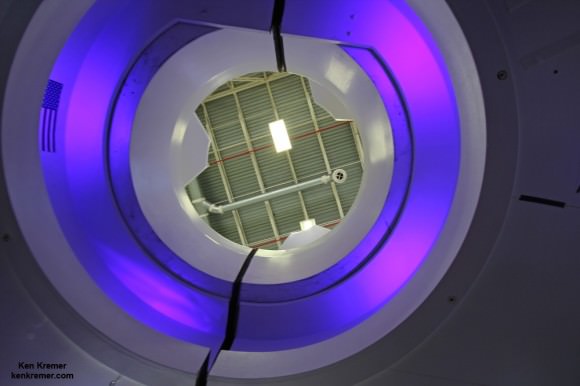
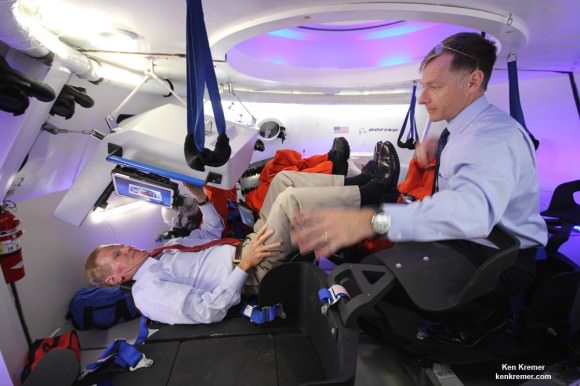
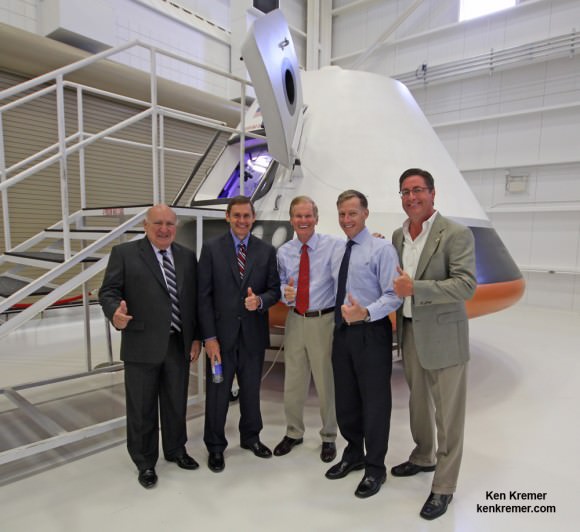
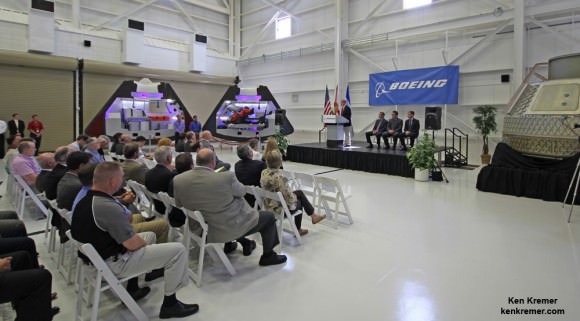
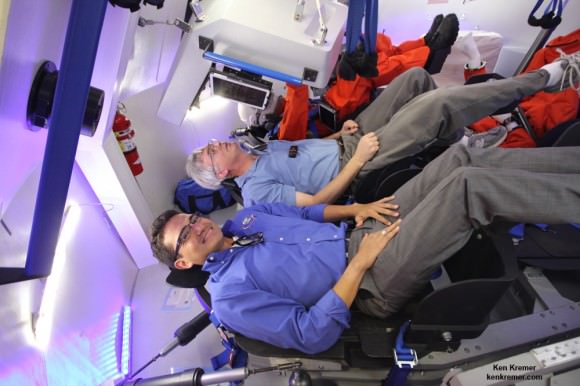


The cutaway sections interestingly shows that the command modules is way more shielded from radiation than the moon hoaxers wants you to believe.
However the automation also means more room for astronauts but less equipment that surrounds the astronaut to be shielded even more like Apollo had. Of course this capsule is only intended for LEO additional shielding is not necessary.
“The cutaway sections interestingly shows that the command modules is way more shielded from radiation than the moon hoaxers wants you to believe.”
Not really relevant though, as CST-100 is not meant to operate beyond LEO, and indeed, dock with a space station soon after launch. That it uses batteries and not solar panels or fuel cells for power, supports that.
Great… now I need a Korean made Samsung laptop to control my American made space capsule! Gives hackers a rise?